Lately I’ve been writing a bit more on my Chapman blog than here. Here are a few recent posts:
https://blogs.chapman.edu/academics/2016/09/09/using-wordpress-at-chapman/
Lately I’ve been writing a bit more on my Chapman blog than here. Here are a few recent posts:
https://blogs.chapman.edu/academics/2016/09/09/using-wordpress-at-chapman/
This morning I did my regular WordPress maintenance tasks: upgrading to the latest stable release, updating plugins, clearing out spam comments, etc. And as I did so I looked at the tagline on my portfolio site and realized that it needed updating.
It was:
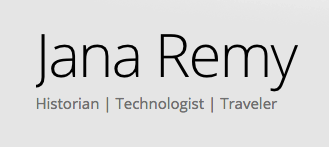 So now it has a bit more alliteration, and better reflects my current professional identity. Because while I am a historian, I write and think more about teaching than about history.
So now it has a bit more alliteration, and better reflects my current professional identity. Because while I am a historian, I write and think more about teaching than about history.
So it is now:
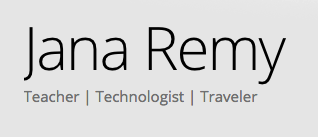 There are so many other things I could put there: Paddler, Reader, Gardener, Friend, etc. But for right now, these three words seem the best fit.
There are so many other things I could put there: Paddler, Reader, Gardener, Friend, etc. But for right now, these three words seem the best fit.
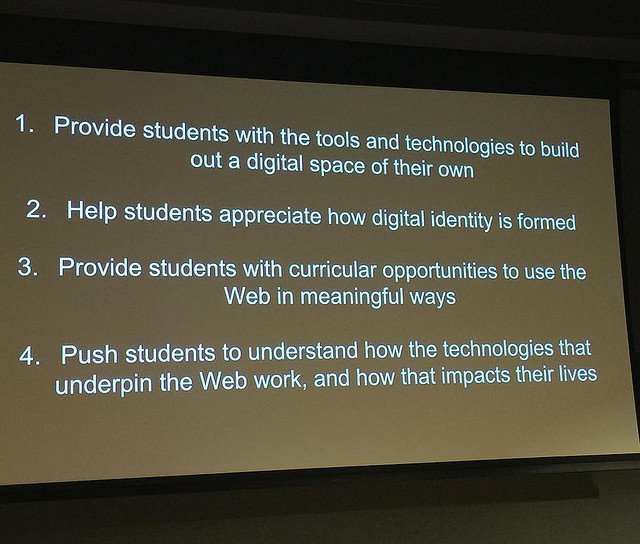
Image is from Martha Burtis’ keynote talk at the Digital Pedagogy Institute that I attended earlier this summer. Her full talk is available here.
I am a teacher, and am happiest when I am grappling with how to share what I know and what I think with others. Thus, I am fortunate that I hold a position where I am teaching nearly everyday–either through technology training or through teaching courses at ChapmanU.
With this new semester, as with each new semester, I am considering how I can improve my teaching skills. And I’ve determined that incorporating a more regular reflective practice will be the best way that I can improve my teaching. I’ve written about this a bit before on my blog, but I am now committing to make this a more explicit focus of my blogginb.
So, to start off, I will invoke one of my greatest mentors and fellow Friend, Parker J Palmer, who asks:
“How can I develop the authority to teach, the capacity to stand my ground in the midst of the complex forces of both the classroom and my own life?”
He clarifies, that by “authority” he means:
In a culture of objectification and technique we often confuse authority with power, but the two are not the same. Power works from the outside in, but authority works from the inside out. We are mistaken when we seek “authority” outside ourselves, in sources ranging from the subtle skills of group process to that less-than-subtle method of social control called grading. This view of teaching turns the teacher into the cop on the comer, trying to keep things moving amicably and by consent, but always having recourse to the coercive power of the law.
External tools of power have occasional utility in teaching, but they are no substitute for authority, the authority that comes from the teacher’s inner life. The clue is in the word itself, which has “author” at its core. Authority is granted to people who are perceived as “authoring” their own words, their own actions, their own lives, rather than playing a scripted role at great remove from their own hearts. When teachers depend on the coercive powers of law or technique, they have no authority at all.
I am painfully aware of the times in my own teaching when I lose touch with my inner teacher, and therefore with my own authority. In those times I try to gain power by barricading myself behind the podium and my status while wielding the threat of grades. But when my teaching is authorized by the teacher within me, I need neither weapons nor armor to teach.
Authority comes as I reclaim my identity and integrity, remembering my selfhood and my sense of vocation. Then teaching can come from the depths of my own truth—and the truth that is within my students has a chance to respond in kind.
His words remind me of something that I have grappled with so many times as I’ve stood in front of a classroom: that feeling of vulnerability and exposure that comes from the unpredictability of human interaction, as well as the actual physical limitations of my own body to enact and enable a teaching experience.
Perhaps I feel this more keenly because of my awareness that my body can be awkward in the physical space of the classroom. On days when I am using crutches it can be nearly impossible to deftly use the podium computer or to meander around the desks of the classroom. Or on some days when I am physically spent and need to sit instead of stand, I feel the challenge of engaging students with my less-than-powerful physical presence. And of course even on days when I am standing confidently there is the sense that my cyborg body is speaking louder than the words that I am sharing with the students.
But then there is the flipside of that, the fact that I am more physically vulnerable can break down the barriers that might be typical between professor and student. If we all gather our chairs in a circle on a day that I need to sit, the students also move away from the spaces of their desks and the trappings of their classroom role. On those days there is no barricade of podium and desk. On those days learning can happen in ways that are quite different from the learning that occurs when I am delivering content from a screen.
Given that I have little control over the days that I can stand in front of my students versus those that I cannot, I try to do the best I can to prepare for whatever might happen when I enter the classroom. A teaching exercise that I used in the past might have to be altered, or a student might need to run the technology if I cannot. If nothing else, it keeps the teaching experience varied, fresh, and open to all kinds of learning possibilities.
So, to return to reflection about my teaching experiences this week, here is a list of a few moments that stand out:
As I think about this list and all that has already happened in this Fall semester thus far, I am feeling pleased about my efforts. As Palmer reminds us,
Good teachers join self, subject, and students in the fabric of life because they teach from an integral and undivided self; they manifest in their own lives, and evoke in their students, a “capacity for connectedness.” They are able to weave a complex web of connections between themselves, their subjects, and their students, so that students can learn to weave a world for themselves…
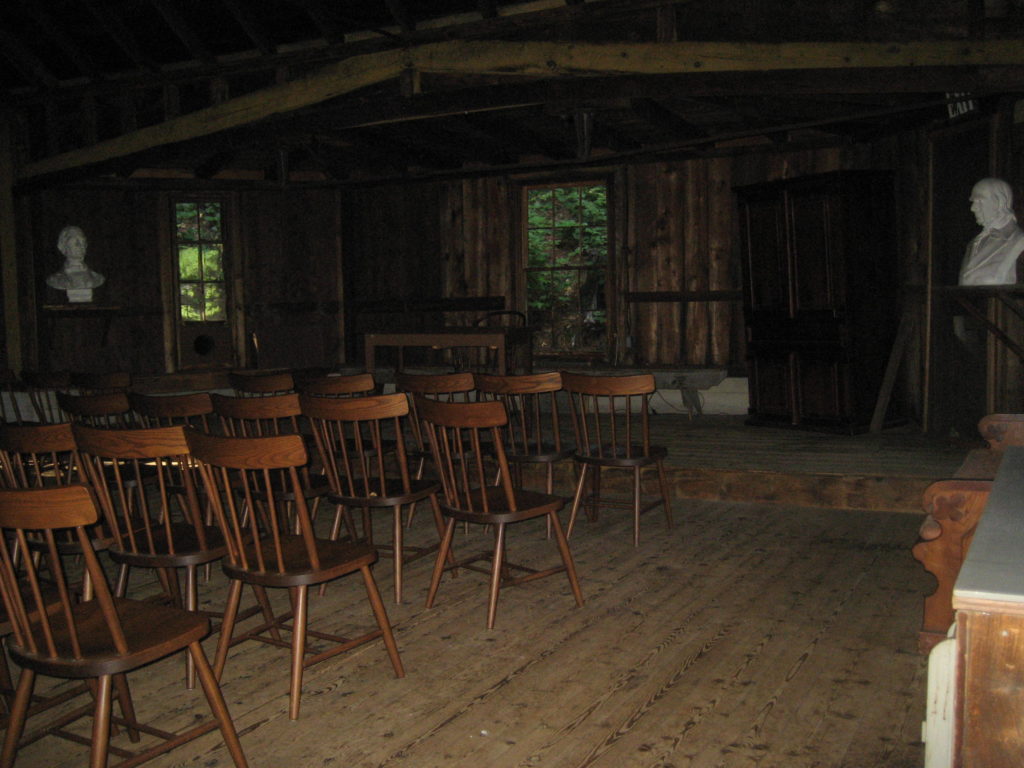 Back when I was a student, I hated the first day of classes (aka Read the Syllabus Day). One semester I rather snarkily informed each of my professors how much I’d paid for their class that day, and that I didn’t feel as though I was getting my money’s worth when the day consisted of having the prof read the syllabus to me (especially because I had already rather-thoroughly perused the syllabus myself beforehand).
Back when I was a student, I hated the first day of classes (aka Read the Syllabus Day). One semester I rather snarkily informed each of my professors how much I’d paid for their class that day, and that I didn’t feel as though I was getting my money’s worth when the day consisted of having the prof read the syllabus to me (especially because I had already rather-thoroughly perused the syllabus myself beforehand).
So this article about alternative First Day of Class activities struck a chord with me.
What I intend to do this year, which I am hoping will go over well, is to have students learn from my previous years’ students on the first day of class. At the end of last semester, I had each student write a letter “To a Future Student” in the class, and I will pass these out and have the students read them and discuss them as a class, which I will then use to launch into a discussion about class norms, expectations, and policies. I’ll then use that to lead into a brief overview of the class which will cover many of the items in the syllabus.
(Note: this post also appeared on the Chapman University Blogs network)
For a long time I’ve been thinking how helpful it would be to have some of the expertise of my colleagues in IS&T, in my Digital Humanities course. At a conference I’d heard about the benefits of embedding librarians within research courses, and it seemed to me that embedding technicians within a DH course would accomplish a similar aim, and would also reinforce the nature of DH as a collaborative discipline.
So today was my first foray in that vein, as Ryan (a member of our server team) attended my class and gave a demo of the inner guts of a PC and a server machine.
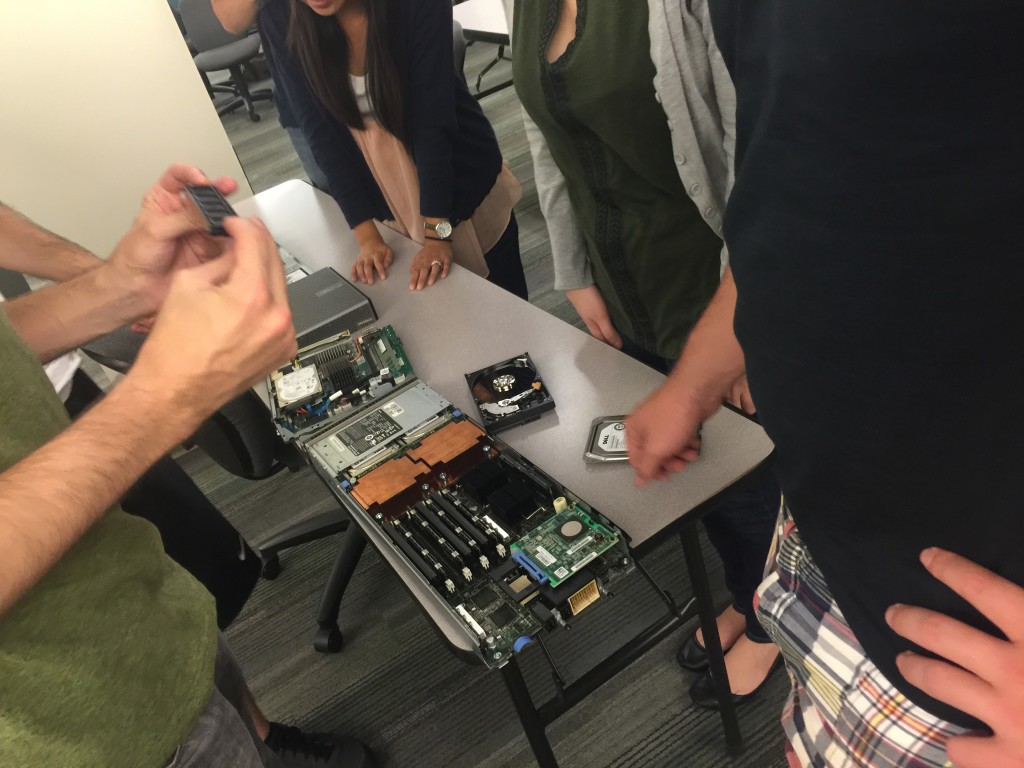 It was successful enough that I will try it again in future classes, and may also call on other technical expertise from our IT department throughout the semester. Because while I don’t think the students need to know all of the details of how a computer works, it is important for them to consider the limitations of various devices and platforms as they imagine the possibilities for their future research projects.
It was successful enough that I will try it again in future classes, and may also call on other technical expertise from our IT department throughout the semester. Because while I don’t think the students need to know all of the details of how a computer works, it is important for them to consider the limitations of various devices and platforms as they imagine the possibilities for their future research projects.
When I prepped my syllabus for the “Introduction to Digital Humanities” class that I taught last year, I included Ted Nelson’s article “Complex information processing: a file structure for the complex, the changing and the indeterminate” because I wanted my students to gain some historical knowledge about how modern-day computer interfaces developed from the ideas of visionary thinkers like Nelson. At the time, I was unaware that Nelson would be a Visiting Fellow on our campus or that I would have the luxury of becoming personally acquainted with him.
My students struggled a bit with the Nelson article. Not only was it long, but his ideas didn’t seem to spark much interest. As we discussed his piece together, I pointed out just how revolutionary his thoughts were in 1965, but that seemed to have little impact on their thinking. Moreover, his ideas about hypertext, or links between words and documents seemed so obvious to their minds that it was difficult to underscore their significance. So I took a different tactic and we created a list of all of the characteristics of Nelson’s imagined platform: it would be connected and iterative and creative and collaborative. It would “grow indefinitely, gradually including more and more of the world’s knowledge.”
“Do you know of any platform like that?” I asked.
The response: Wikipedia.
When I shared their reply with Ted a few weeks later, he seemed frustrated. And I could see why. Wikipedia, although a valuable resource and an excellent knowledge repository, is not a creative space. Indeed, it tends towards being rather scripted and formulaic, as well as hierarchical in ways that don’t gel with Nelson’s vision.
My students’ response to my question about Project Xanadu points to the unrealized nature of Nelson’s early vision–we remain locked into ways of digitally writing that replicate paper and although many of us read e-books or use text-based apps of various kinds, they are simply re-presentations of analog modes of creation. But it also points out a far larger problem: that the development of our computer interfaces and software feels like a “given” to most students. They have difficulty imagining that computers could have developed a different way or with an alternate mode of interaction. Which concerns me about how they may imagine their own future–as a series of inevitabilities rather than as dynamic and evolving threads of occurrences on a canvas that they can manipulate and shape to their liking.
I’ve been going through the dozens of “draft” posts that have never seen the light of day. This is one of those (from November 2012), which I didn’t post because at the time I was hesitant to admit some of my tech-frustrations…
For the first few weeks of the semester I had a running joke with one of my colleagues, where I would come back from class and she would ask me what I’d broken that day. Because, for whatever reason, nearly every digital tool that I was trying with my students ended up having a major snafu when I presented it to them in class.
There was the class wordpress blog that ended up stalling when I asked all of the students to post comments simultaneously, and the SIMILE timeline tool that broke whenever the students tried to add events that extended over a period of time, the day that I introduced Prezi that also coincided with the very hour that they rolled out an unannounced upgrade to the menu structure of the software, and numerous fails with using Blackboard tools (the wikis and discussion boards simply weren’t robust enough to be accessed by 25 users at once). Finally, yesterday, I learned that when I asked my students to all create wikipedia accounts, we learned that they screen by IP address for new registrations and had put a 24-hour hold on any new accounts being added from our classroom.
Fortunately I’m fairly patient with technology. Since I’m fussing with it nearly all-day long, I’ve learned that there are almost-always workarounds. Even when they mean using pen and paper (and typewriters).
In teaching my “Intro to DH” class last semester to Chapman’s MA/MFA graduate students, I spent a lot of time discussing professionalization and a significant part of that discussion focused on how funding agencies (like the NEH-ODH) make DH projects do-able. As the culmination of this conversation, for the final project in the course I had the students compose mock applications for an NEH-ODH startup grant.
I designed the course in this manner for three primary reasons:
1) The first time I had to write a grant proposal for external funding, I found it incredibly daunting to describe what I aimed to do with my project when I wasn’t even yet sure myself what I would find once the project got underway. Doing the legwork and the guesswork involved in that process and then writing coherently about it, was much more difficult than I expected. Thus, I felt that it would be a great learning experience for the students to do this before they had actual money at stake.
2) Crafting a mock NEH-ODH application reinforced many of the concepts that we’d discussed in class, and brought them together in such a way that it showed me that the students understood the filed of DH better than if they’d simply written a traditional end-of-the-semester paper. In their proposal they had to discuss other similar projects, outline their technical requirements, include descriptions of team members’ skills, craft a budget, and create a plan for the sustainability of their project. From their proposals I had a strong sense of what they’d learned throughout the semester since when the class started the students had only the foggiest notion of what a DH project entailed.
3) Writing a grant application is a portable skill that could serve the students in a wide-variety of ways after they graduate, even if they don’t continue in academia. Learning to communicate their research ideas to a general audience could serve them in many ways, including a future in technical writing, project management, journalism, or in a non-profit job.
The success of the students in their proposals far exceeded my expectations. As each student gave a lightning talk description of what they aimed to do, I realized that nearly every one of them was worthy of funding. And not only that, since December several of the students have moved forward with their projects on their own (sans funding), based on the proposals that they outlined in our class.
At the end of the semester I tweeted about our project and caught the attention of Brett Bobley (the CIO of the NEH and the director of the ODH). That exchange:
“We don’t have any time for reflective practice,” explained my brother-in-law, a junior high school science teacher. He went on to say that he and his colleagues were just barely keeping their heads about water with their teaching loads so they rarely had time to thoughtfully consider changes to their methods or curriculum.
This was in response to my telling him that I had just finished teaching for the semester and was in the phase of considering what had gone well and what I’d like to change for the next time around, and was amending my syllabus accordingly. I hadn’t considered before that this was a luxury, to have time for reflection at the end of the term. But I suppose it is–I only teach one class at a time because the rest of my day is spent on administrative duties. So that one class garners the lion’s share of my mental attention and I consider each of my successes and frustrations in the classroom fairly closely.
This was on my mind as I read AHA President Ken Pomeranz’ article “Some Habits of Mind Historians Keep Hidden” in the recent issue of Perspectives. Like my research practices, most of my teaching practices tend to be “hidden habits” rather than techniques that I discuss often with colleagues or friends. And I plan to change that, because I’ve had some rather remarkable experiences in the classroom during my time at Chapman, and I’d like to discuss some of what I’ve learned–in the hopes that it will not only be of interest to my readers, but also to help me to improve my own teaching as I reflect on what has worked best for my students’ learning.
I used to teach religion classes to Mormon teenagers every morning, and that’s how I learned that I wanted to be a teacher.
Although I was up at the ungodly hour of 4:30 every morning to commute to my teaching gig and it was a thankless and unpaid position, I loved it. I came home alive and ready for more. Late into the evening I would stay up scheming ways of edu-taining my students–so none of us would be nodding off in class, and I loved that challenge.
After from teaching in the college classroom this afternoon, I’m feeling that same adrenaline surge. Today my students gave some two-minute lightning presentations. It was a daunting task–to get up in front of the class and try to hold their attention while speaking about the implications of the involvement of the federal government on the environment of the American West. But they did well, even through a bit of nervous shakiness and laughter. And I came away marveling at the fact that they are doing hard work and, above all, learning.